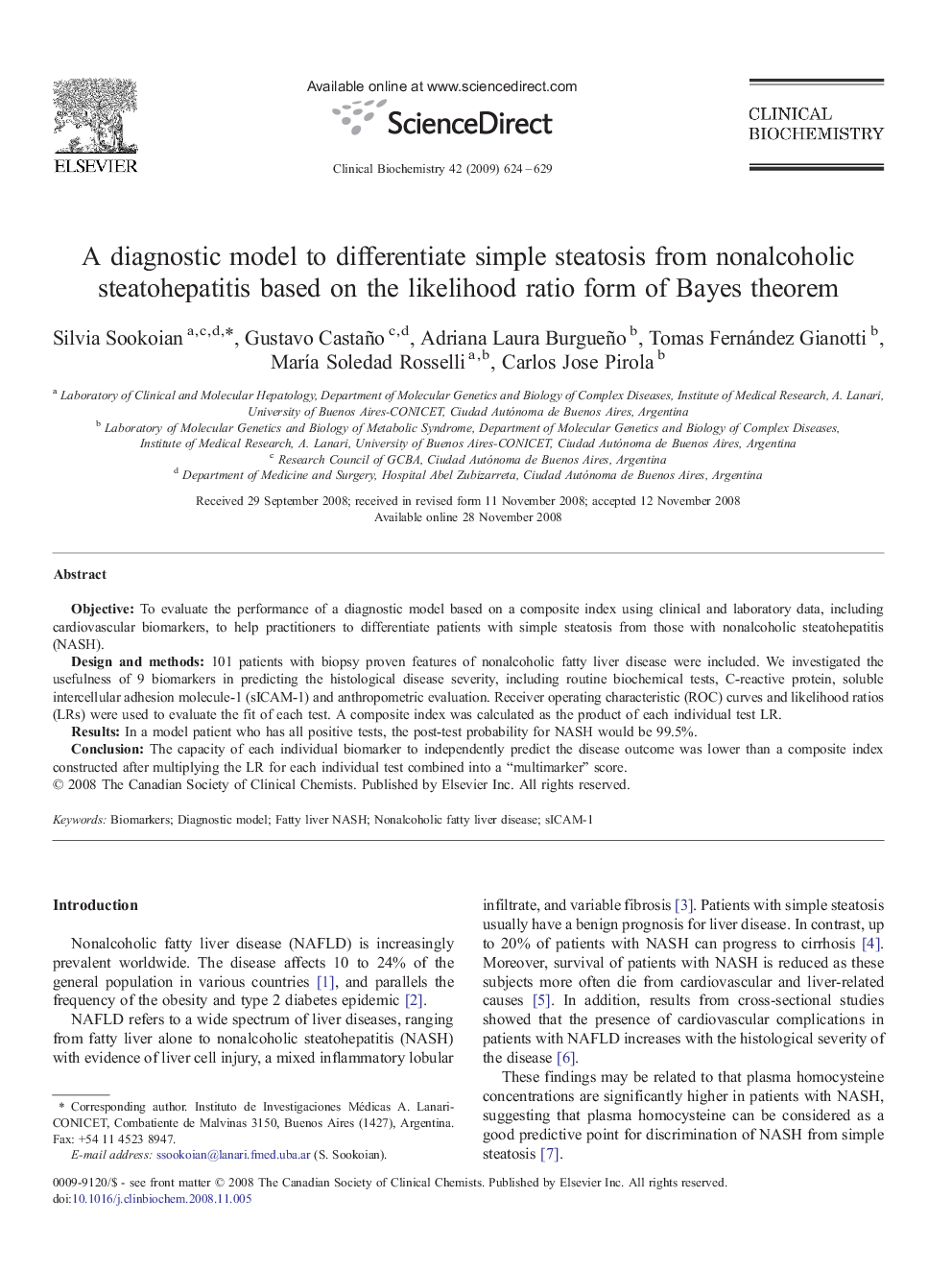| Article ID | Journal | Published Year | Pages | File Type |
|---|---|---|---|---|
| 1971128 | Clinical Biochemistry | 2009 | 6 Pages |
ObjectiveTo evaluate the performance of a diagnostic model based on a composite index using clinical and laboratory data, including cardiovascular biomarkers, to help practitioners to differentiate patients with simple steatosis from those with nonalcoholic steatohepatitis (NASH).Design and methods101 patients with biopsy proven features of nonalcoholic fatty liver disease were included. We investigated the usefulness of 9 biomarkers in predicting the histological disease severity, including routine biochemical tests, C-reactive protein, soluble intercellular adhesion molecule-1 (sICAM-1) and anthropometric evaluation. Receiver operating characteristic (ROC) curves and likelihood ratios (LRs) were used to evaluate the fit of each test. A composite index was calculated as the product of each individual test LR.ResultsIn a model patient who has all positive tests, the post-test probability for NASH would be 99.5%.ConclusionThe capacity of each individual biomarker to independently predict the disease outcome was lower than a composite index constructed after multiplying the LR for each individual test combined into a “multimarker” score.
